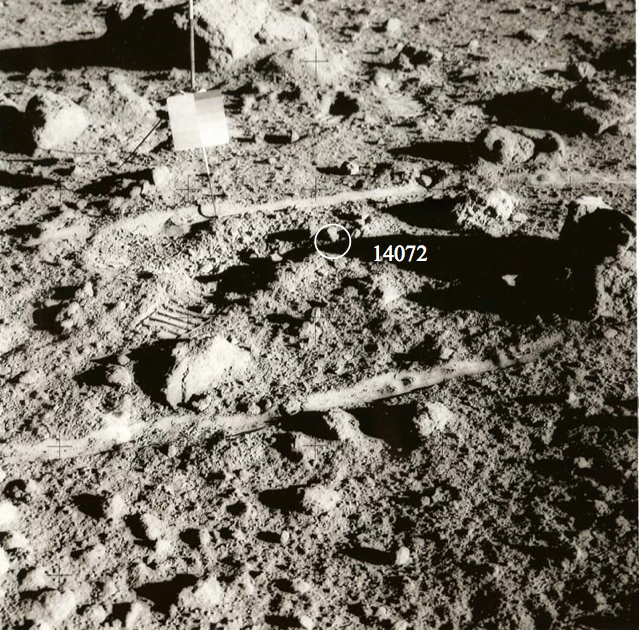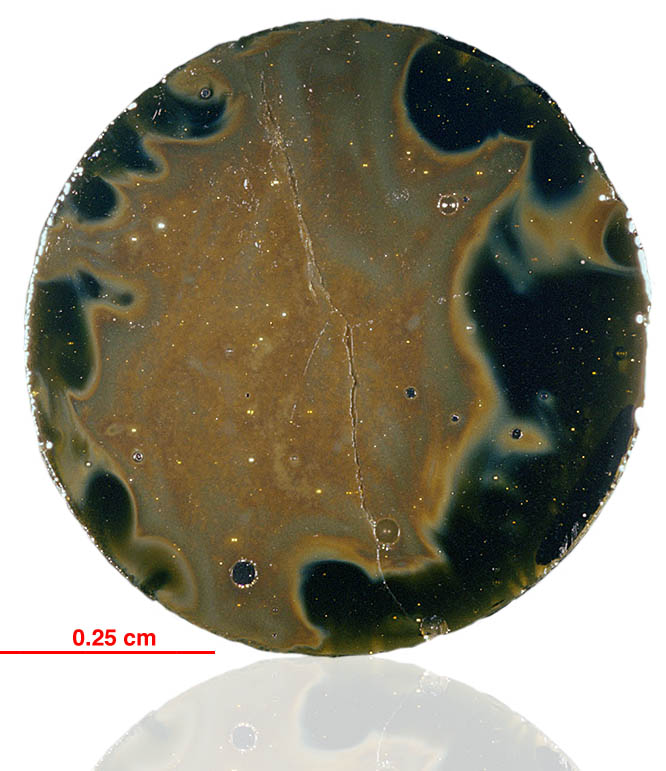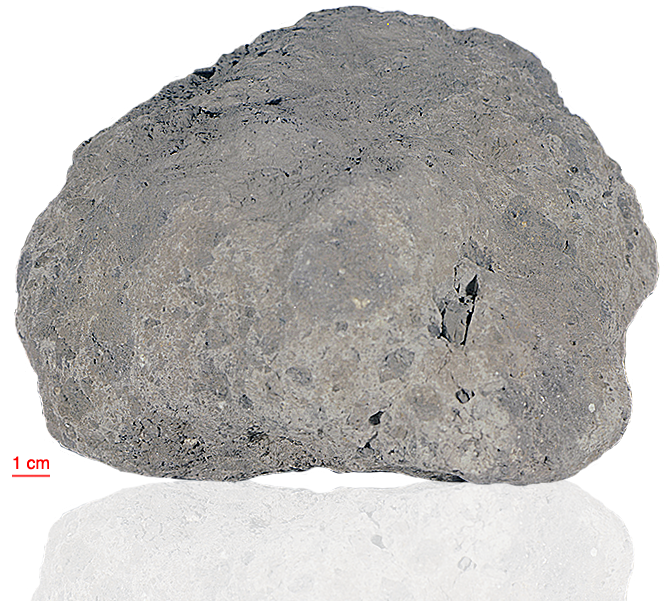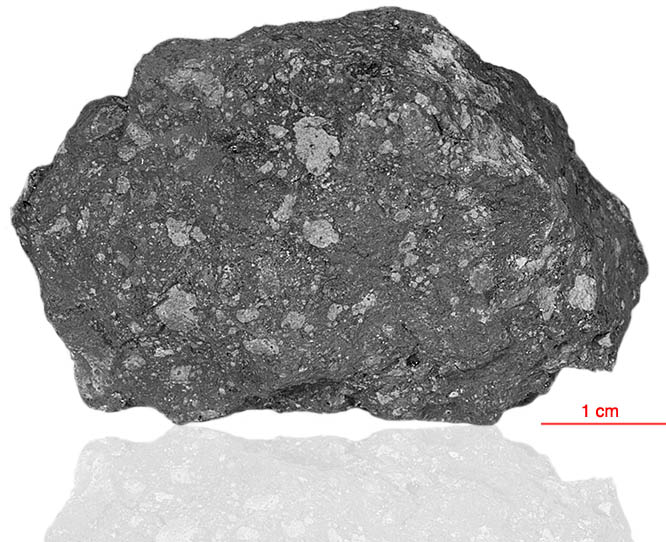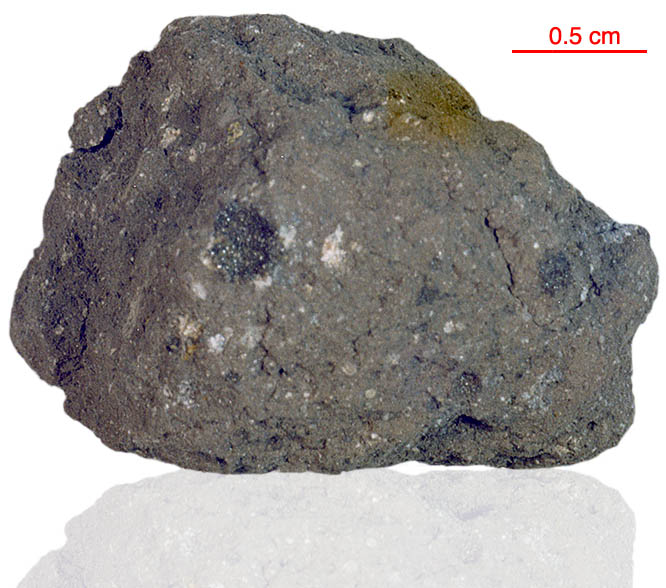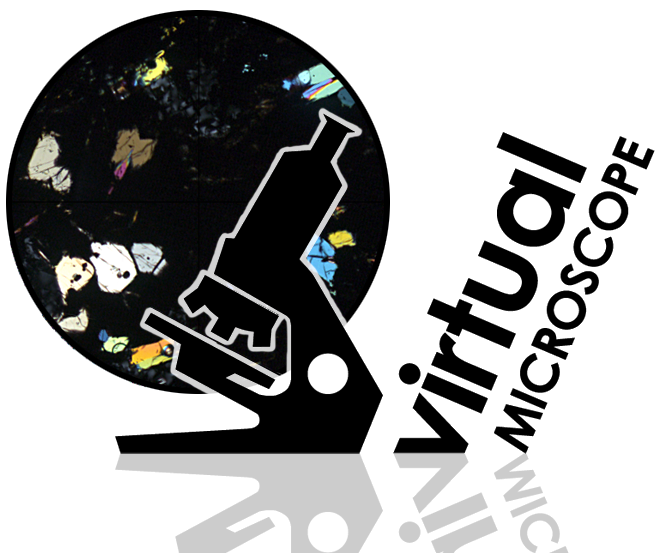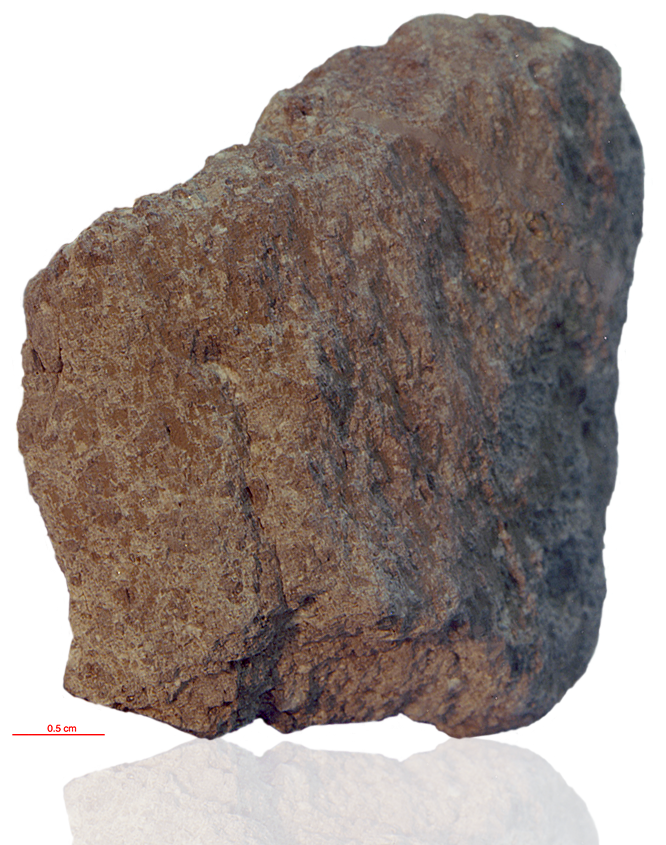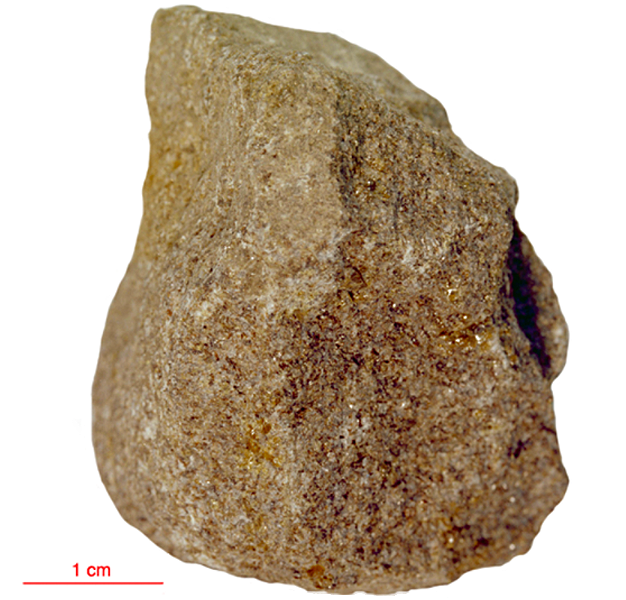
Fact sheet
14072 is a porphyritic mare basalt with medium-sized olivine phenocrysts, sub-ophitic to ophitic texture and little glass in its residium. Olivine appears in 14072 as large, sub-rounded phenocrysts up to 2 mm across, as inclusions in large pyroxenes and as part of the late-stage assemblage with cristobalite and spongy network of metallic iron.
The sample weighed 45 grams before analysis and is 4.04±0.05 billion years old (Ar/Ar).
The mounting resin of this thin section has deteriorated over time and now contains clusters of feathery crystallites around the margins of the thin section.
Further details of this and other Apollo samples are here: http://curator.jsc.nasa.gov/lunar/
The Apollo 14 landing site was in a region formed by impact-basin debris.
Most of the 42 kilograms of rocks and soil collected on Apollo 14 are breccias (rocks that are composed of fragments of other, older rocks). In some cases, the rock fragments that form a breccia are themselves breccias. Such rocks obviously have experienced complex histories with multiple generations of impact events. Some breccias were heated enough that some of the material in the rock was melted.
Apollo 14 was launched on 31 January 1971.
